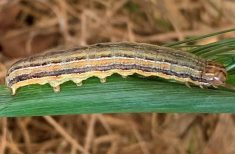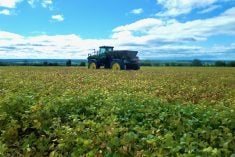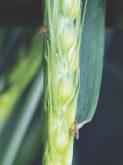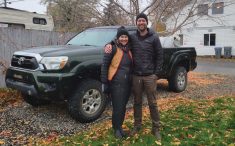Have you heard the one about that farmer who lost five acres of soybeans to gophers and cutworms? And then how those gophers refused to go away? It’s a doozy, and this story isn’t done.
To bring you up to speed, here’s a quick briefing: I’m currently renting pastureland, and I began the process of transforming the 120 acres into cropland last fall. I seeded soybeans into the field this spring after a few additional passes with a speed tiller and cultivator.
With the exception of a large circle of empty dirt that is clearly visible from the road, the field’s plant stand is within the intended range, the soybeans are looking healthy, and the weed pressure isn’t nearly as bad as I expected it would be, having so recently been host to all sorts of plants. These are all positive things.
Read Also

Claas brings 1000 Series SP forage harvesters to Canada
In mid-August, Claas unveiled its new line of Jaguar forage harvesters at an event in Visalia, California, deep in the heart of that state’s dairy region.
Back when I signed the rental contract, the excitement of increasing our farm’s acreage base overshadowed the hurdles that were to come. That hasn’t changed. Knowing then what I know now, I would still have pounced on the opportunity. But I would have done things differently.
Mid-May we drove our hoe drill to the field, ready to seed into a field that hadn’t seen a crop in decades. There were clumps of sod that hadn’t broken up over winter. I had cultivated it a week prior, hoping to get away with not having to rent any implements this spring, but cultivating the clumps did very little. We decided to rent a speed tiller and go over the acres.
The speed tiller did more to prepare the seed bed than I could have imagined. But it was dry already, and going over the whole field a second time with a tillage implement seemed silly at the time. But, what do you do? Does a good seed bed trump planting into moisture?
It was dry. Nobody seeding then was seeding into moisture, so it provided us a unique opportunity. We could plant the soys at the ideal depth, without considering whether the seed was reaching moisture or not. Rain would have been required to matter how deep we went.
It took a week or so, but the moisture came, and the plants started to emerge. Some of the land in question is sandy, and, as such, the hoes on the drill plunged the seeds quite deep in those areas. Emergence was staggered.
And then it happened.
Moment of truth
I asked an agronomist to swing by and check out my pastureland. I hadn’t been to the field in a bit, and there was some curiosity in the ag community about what a crop planted immediately after pasture, without fertilizer, would look like.
I met him on the field. I came on motorcycle. I was in good spirits and anticipated a nice, light chat about how great this crop looked.
He was waiting for me at the approach.
What shocked me the most was how clearly defined the area was. Walking west from the approach, we were trampling over fully emerged soybeans, many of which had nibble marks. And this got progressively worse as we tracked west.
Then there was nothing. No. That’s not entirely true. I did see the odd cotyledon. But other than that the ground was void of plant life. At the time, we estimated the area to be about five acres in size.
We got on our knees to dig around, thinking the problem might be cutworms. Many of the stems were severed flush with the ground. We couldn’t find anything. We couldn’t find a single worm, and the worms wouldn’t explain the large bite marks we found in the areas not fully eaten.
We snapped photos, distributed them and came up with nothing.
Then I got a second opinion.
“I’ve never seen it this bad, but it’s definitely gophers that have been eating your soybean plants. I also found evidence of cutworms.”
Gophers enjoy eating the stems and don’t like the taste of the cotyledons, said the agronomist, who also texted me a photo of a cutworm.
We noted how many gophers there were, scrambling to find their homes while we were tilling. But never once did we think they would band together with the cutworms to decimate five acres of my soybeans.
Then the stories came out of the woodwork.
“If you break pasture, you’re gonna have to deal with gophers that first year,” one farmer told me. And many more have told me something similar since.
You’ve got to put a couple tablespoons of gopher poison down each hole, I heard. I did, and then I watched those arrogant gophers continue to munch on what looks to be a great soybean crop.
Then I heard of another trick. Then another. These are best left out of the newspaper, but let your imagination wander and I’m sure you’ll be close.
The gophers have slowed now. It may be a combination of the poison and the unspeakable, but whatever the case the gophers no longer seem to be eating my plants and the cutworms have had their fill, as well. (Note: if you see notable amounts of gophers on your land, do something about it immediately.)
So, that’s the story of the farmer who lost five acres of soybeans to gophers. It’s a story I’m currently trying to end.















